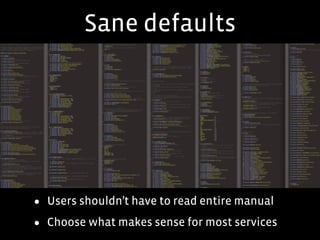Tupperware is Facebook's system for containerized deployment of services at scale. It handles provisioning machines, distributing binaries, monitoring processes, and failover to ensure services run smoothly in production. Engineers focus on application logic rather than deployment details. Tupperware uses Linux containers to isolate over 300,000 processes across 15,000+ services running on thousands of machines. It incorporates features like service discovery, logging, resource limits, and automated rollouts to efficiently manage infrastructure. Lessons learned include releasing often, using canaries for rollouts, and providing sane defaults to reduce user burden.





























